cement wet process

Wet Process of Cement Manufacturing -
Wet Process and Dry Process Wet Process. The wet process of cement manufacturing refers to grinding raw material into slurry after mixing with water
دردشة على الإنترنت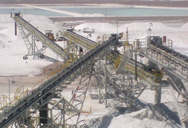
Wet Process Of Cement | Manufacturing Of Cement By
2022-2-9 · Manufacturing of Cement by Wet Process. The following is a wet process of cement manufacturing step by step guide, 1. The raw limestone from quarries is first crushed into small size fragments.Then it is mixed with clay or shale in a ball or tube mill and ground to form a slurry of a fine consistency with the addition of water. (The slurry is prepared with a water content of
دردشة على الإنترنت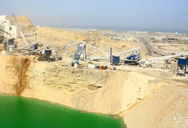
Manufacturing of Cement By Dry and Wet Process
Cement Manufacturing Process Flow Chart. (i) Drying Zones: In the wet process, the drying zone is comparatively larger than the dry process. It is because the raw material in slurry form is directly fed into the kiln which has more amount of water. As shown in
دردشة على الإنترنت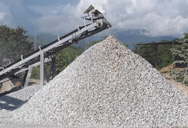
wet process | cement | Britannica
Other articles where wet process is discussed: cement: Manufacture of cement: manufacture are known as the wet, dry, and semidry processes and are so termed when the raw materials are ground wet and fed to the kiln as a slurry, ground dry and fed as a dry powder, or ground dry and then moistened to form nodules that are fed to
دردشة على الإنترنت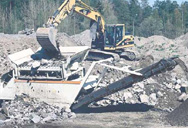
Cement Manufacturing: wet process and dry process ...
Storage and Packing As cement comes out from grinding mills, it is collected in a hopper and taken in bucket elevator for storage in silos cement from silos is packed by machines in bags. Each bag of cement contains 50 kg or 0 m3 of cement. Figure 1. Flow Chart of Wet Process for manufacturing of cement. 1. Difference between Dry Process and ...
دردشة على الإنترنت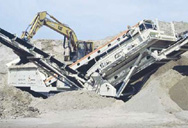
Energy and Cost Analysis of Cement Production Using
2014-1-9 · Keywords: Wet Process; Dry Process; Cement; Crushing; Milling; Nigeria . 1. Introduction . Cement and/or clinker (cement primary input) is a com- modity being produced in over 150 countries of the world [1]. It is an essential input into the production of concrete needed for building purposes and other con- struction related activities.
دردشة على الإنترنت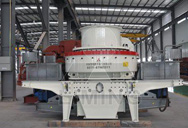
The cement kiln - Understanding Cement
Wet process kilns. The original rotary cement kilns were called 'wet process' kilns. In their basic form they were relatively simple compared with modern developments. The raw meal was supplied at ambient temperature in the form of a slurry. A wet process kiln may be up to 200m long and 6m in diameter.
دردشة على الإنترنت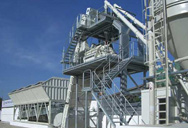
How Cement Is Made - Portland Cement Association
Cement is so fine that 1 pound of cement contains 150 billion grains. The cement is now ready for transport to ready-mix concrete companies to be used in a variety of construction projects. Although the dry process is the most modern and popular way to manufacture cement, some kilns in the United States use a wet process.
دردشة على الإنترنت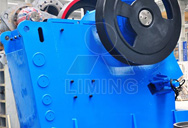
(PDF) Cement Manufacturing - ResearchGate
2022-2-8 · Process Discretion: Wet process, Semi-dry process, Dry process and Finish process. The environmental im pact of the cement production and its variations between different cement plants, using Life ...
دردشة على الإنترنت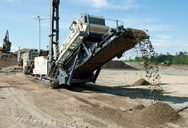
11.6 Portland Cement Manufacturing
1971-8-17 · Classification Code (SCC) for portland cement plants with wet process kilns is 3-05-006, and the six-digit SCC for plants with dry process kilns is 3-05-007. Portland cement accounts for 95 percent of the hydraulic cement production in the United States. The balance of domestic cement production is primarily masonry cement.
دردشة على الإنترنت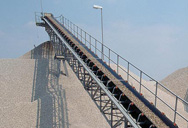
The Wet process of cement (Mahasenan, et.al 2008 ...
Download scientific diagram | The Wet process of cement (Mahasenan, et.al 2008) from publication: Cement Manufacturing | Cement | ResearchGate,
دردشة على الإنترنت
wet process | cement | Britannica
Other articles where wet process is discussed: cement: Manufacture of cement: manufacture are known as the wet, dry, and semidry processes and are so termed when the raw materials are ground wet and fed to the kiln as a slurry, ground dry and fed as a dry powder, or ground dry and then moistened to form nodules that are fed to
دردشة على الإنترنت
Cement Manufacturing: wet process and dry process ...
Storage and Packing As cement comes out from grinding mills, it is collected in a hopper and taken in bucket elevator for storage in silos cement from silos is packed by machines in bags. Each bag of cement contains 50 kg or 0 m3 of cement. Figure 1. Flow Chart of Wet Process for manufacturing of cement. 1. Difference between Dry Process and ...
دردشة على الإنترنت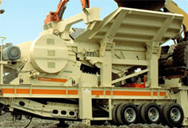
BMC || Manufacturing of Cement Dry and Wet Process –
2021-11-10 · Wet Process. Note. To produce one tone of cement, 100 kg coal is used. All cement plants after 1980’s use the dry process for manufacture of cement. In wet process to make one tone of cement, 350 kg of coal is used. Burning & grinding process remains same for both dry & wet process. (2) Burning. The burning is carried out in a rotary kiln.
دردشة على الإنترنت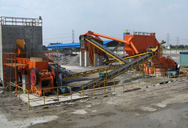
The cement kiln - Understanding Cement
Wet process kilns. The original rotary cement kilns were called 'wet process' kilns. In their basic form they were relatively simple compared with modern developments. The raw meal was supplied at ambient temperature in the form
دردشة على الإنترنت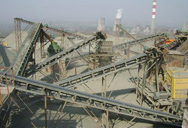
WET PROCESS SHOTCRETE
2012-11-17 · Cement-Aggregate Combinations (Mortar-Bar Method) Standard Specification for Concrete Made By Volumetric ... B. Wet Mix Process: Shotcrete in which all the ingredients including water, are mixed before introduction into the delivery hose. Compressed air is introduced to the material flow at the
دردشة على الإنترنت
How Cement Is Made - Portland Cement Association
Cement is so fine that 1 pound of cement contains 150 billion grains. The cement is now ready for transport to ready-mix concrete companies to be used in a variety of construction projects. Although the dry process is the most modern and popular way to manufacture cement, some kilns in the United States use a wet process.
دردشة على الإنترنت
(PDF) Cement Manufacturing - ResearchGate
2022-2-8 · Process Discretion: Wet process, Semi-dry process, Dry process and Finish process. The environmental im pact of the cement production and its variations between different cement plants, using Life ...
دردشة على الإنترنت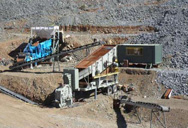
Cement Production - an overview | ScienceDirect Topics
Cement production processes can be categorized as dry, semidry, semiwet, and wet processes depending on the handling of raw material before being fed to the rotary kiln. Nowadays, almost all new plants are based on the dry process and many old wet plants are also remodeled to dry or semidry processes.
دردشة على الإنترنت
Cement Manufacturing Process - Sanghi cement
2021-4-29 · Cement manufacturing process involves various raw materials and processes. Cement is a greenish grey coloured powder, made of calcined mixtures of clay and limestone. When mixed with water becomes a hard and strong building material.It was first introduced by a British stone mason, Joseph Aspdin in 1824, who cooked cement in his kitchen. He heated []
دردشة على الإنترنت
DETAILED WET PROCESS OF CEMENT MANUFACTURING -
2021-12-26 · detailed wet process of cement manufacturing - lceted If the chalk is used in the wet process , it is finely broken and spread in water in the wash mill. The wash mill is a circular pit with rotating radial arms with rakes that break the solids into lumps.
دردشة على الإنترنت
Cement Manufacturing: wet process and dry process ...
Storage and Packing As cement comes out from grinding mills, it is collected in a hopper and taken in bucket elevator for storage in silos cement from silos is packed by machines in bags. Each bag of cement contains 50 kg or 0 m3 of cement. Figure 1. Flow Chart of Wet Process for manufacturing of cement. 1. Difference between Dry Process and ...
دردشة على الإنترنت
wet process | cement | Britannica
Other articles where wet process is discussed: cement: Manufacture of cement: manufacture are known as the wet, dry, and semidry processes and are so termed when the raw materials are ground wet and fed to the kiln as a slurry, ground dry and fed as a dry powder, or ground dry and then moistened to form nodules that are fed to
دردشة على الإنترنت
Comparative study of wet and dry process of cement ...
2021-12-29 · Request PDF | Comparative study of wet and dry process of cement manufacturing using Life Cycle Assessment approach | The aim of this study is to evaluate or to assess the environmental impact of ...
دردشة على الإنترنت
The cement kiln - Understanding Cement
Wet process kilns. The original rotary cement kilns were called 'wet process' kilns. In their basic form they were relatively simple compared with modern developments. The raw meal was supplied at ambient temperature in the form
دردشة على الإنترنت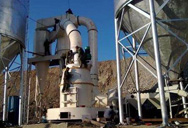
Manufacture of Portland Cement - Process and Material use
2020-4-13 · Wet process ( old technology ) In the earlier part of the century i.e., from 1913 to 1960, the wet process was used for the manufacture of cement. From 1913 onwards, the cement industry underwent a number of changes mainly to suit the requirements of the manufactures and the govt. policies till early 1982.
دردشة على الإنترنت
11.6 Portland Cement Manufacturing
2021-11-10 · cement plants with wet process kilns is 3-05-006, and the six-digit SCC for plants with dry process kilns is 3-05-007. Portland cement accounts for 95 percent of the hydraulic cement production in the United States. The balance of domestic cement production is primarily masonry cement. Both of these materials are
دردشة على الإنترنت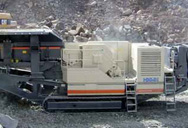
Manufacture of Portland Cement- Materials and
Fig: Manufacture of Cement by Dry Process. b) Wet Process The raw materials are firstly crushed and made into powdered form and stored in silos. The clay is then washed in washing mills to remove adhering organic matters found in
دردشة على الإنترنت
How Cement Is Made - Portland Cement Association
Cement is so fine that 1 pound of cement contains 150 billion grains. The cement is now ready for transport to ready-mix concrete companies to be used in a variety of construction projects. Although the dry process is the most modern and popular way to manufacture cement, some kilns in the United States use a wet process.
دردشة على الإنترنت
Manufacture process of cement Step by Step Description
Manufacture process of cement . 1) Mixing of raw material:-A materials like as limestone or chalk and shale or clay may be mixed either in dry condition or wet condition.The process of according is known as dry process or wet process of mixing. a) Dry process:- A dry process, the raw materials are first reduced in size of 25mm in crushers.The current of dry air is then passed
دردشة على الإنترنت
- sample letter to confirm to attend workshop training
- south africa mining rock cone crusher
- crusher in kolomela mine
- chromite ore processing plant
- machine pp squeezing
- kaolin grinding and processing machineries india
- stone cone crusher ft standard
- gold mining trommels for sale crusher for sale
- rock crusher excavator bucket for sale
- what was the california gold rush
- working operation of a ball mill
- hand rock crusher mill
- oil separator machine
- used stone crushing plant for sale
- nama nama perusahaan batching plant di jabodetabek